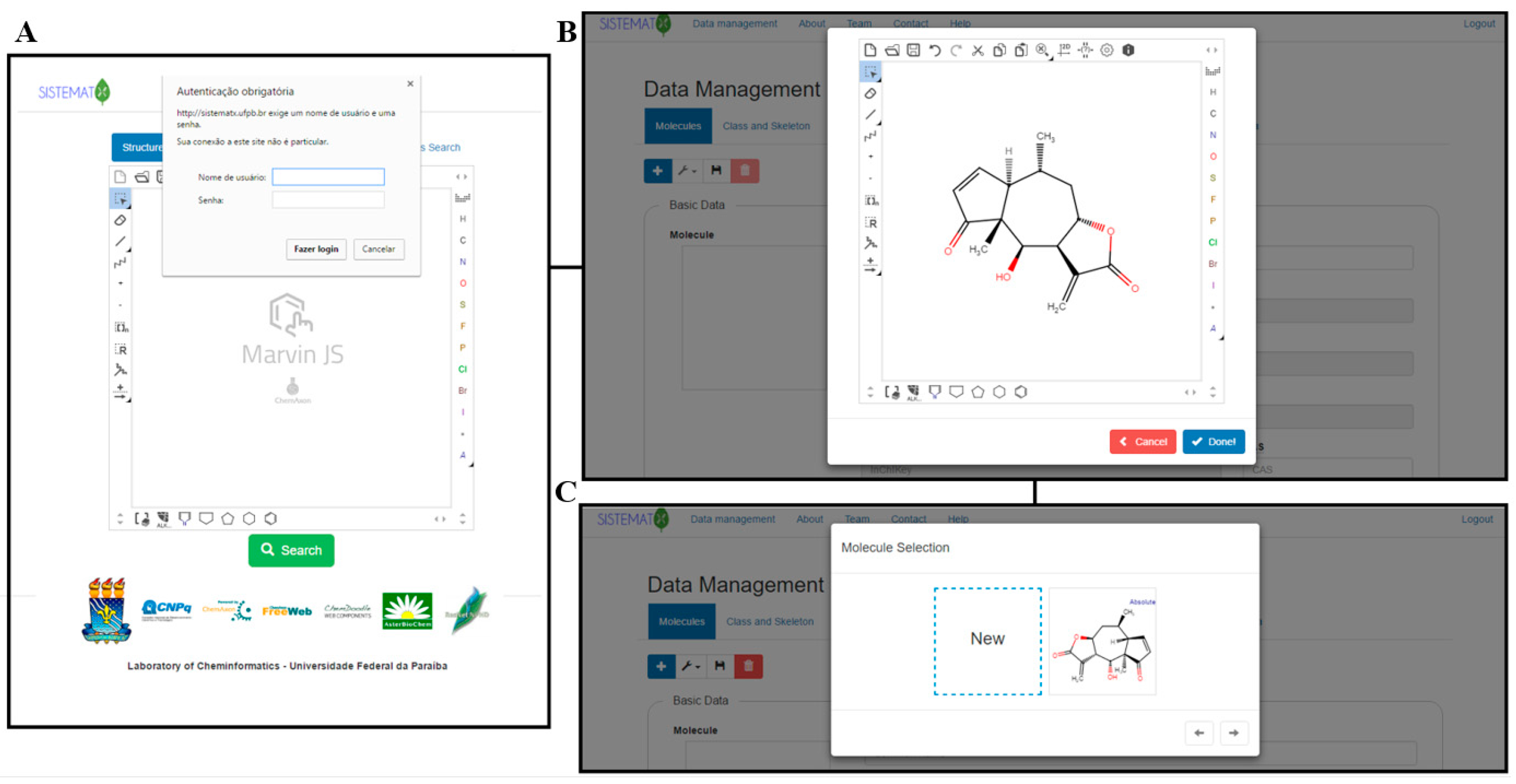Difference between revisions of "Template:Article of the week"
Shawndouglas (talk | contribs) (Updated article of the week text.) |
Shawndouglas (talk | contribs) (Updated article of the week text.) |
||
| Line 1: | Line 1: | ||
'''"[[Journal: | <div style="float: left; margin: 0.5em 0.9em 0.4em 0em;">[[File:Fig4 Scotti Molecules2018 23-1.png|240px]]</div> | ||
'''"[[Journal:SistematX, an online web-based cheminformatics tool for data management of secondary metabolites|SistematX, an online web-based cheminformatics tool for data management of secondary metabolites]]"''' | |||
The traditional work of a natural products researcher consists in large part of time-consuming experimental work, collecting biota to prepare, extracts to analyze, and innovative metabolites to identify. However, along this long scientific path, much information is lost or restricted to a specific niche. The large amounts of data already produced and the science of metabolomics reveal new questions: Are these compounds known or new? How fast can this information be obtained? To answer these and other relevant questions, an appropriate procedure to correctly store [[information]] on the data retrieved from the discovered metabolites is necessary. The SistematX (http://sistematx.ufpb.br) interface is implemented considering the following aspects: (a) the ability to search by structure, [[SMILES (language)|SMILES]] (Simplified Molecular-Input Line-Entry System) code, compound name, and species; (b) the ability to save chemical structures found by searching; (c) the ability to display compound data results, including important characteristics for natural products chemistry; and (d) the user's ability to find specific information for taxonomic rank (from family to species) of the plant from which the compound was isolated, the searched-for molecule, and the bibliographic reference and Global Positioning System (GPS) coordinates. ('''[[Journal:SistematX, an online web-based cheminformatics tool for data management of secondary metabolites|Full article...]]''')<br /> | |||
<br /> | <br /> | ||
''Recently featured'': | ''Recently featured'': | ||
: ▪ [[Journal:Rethinking data sharing and human participant protection in social science research: Applications from the qualitative realm|Rethinking data sharing and human participant protection in social science research: Applications from the qualitative realm]] | |||
: ▪ [[Journal:Handling metadata in a neurophysiology laboratory|Handling metadata in a neurophysiology laboratory]] | : ▪ [[Journal:Handling metadata in a neurophysiology laboratory|Handling metadata in a neurophysiology laboratory]] | ||
: ▪ [[Journal:ISO 15189 accreditation: Navigation between quality management and patient safety|ISO 15189 accreditation: Navigation between quality management and patient safety]] | : ▪ [[Journal:ISO 15189 accreditation: Navigation between quality management and patient safety|ISO 15189 accreditation: Navigation between quality management and patient safety]] | ||
Revision as of 20:31, 26 February 2018
"SistematX, an online web-based cheminformatics tool for data management of secondary metabolites"
The traditional work of a natural products researcher consists in large part of time-consuming experimental work, collecting biota to prepare, extracts to analyze, and innovative metabolites to identify. However, along this long scientific path, much information is lost or restricted to a specific niche. The large amounts of data already produced and the science of metabolomics reveal new questions: Are these compounds known or new? How fast can this information be obtained? To answer these and other relevant questions, an appropriate procedure to correctly store information on the data retrieved from the discovered metabolites is necessary. The SistematX (http://sistematx.ufpb.br) interface is implemented considering the following aspects: (a) the ability to search by structure, SMILES (Simplified Molecular-Input Line-Entry System) code, compound name, and species; (b) the ability to save chemical structures found by searching; (c) the ability to display compound data results, including important characteristics for natural products chemistry; and (d) the user's ability to find specific information for taxonomic rank (from family to species) of the plant from which the compound was isolated, the searched-for molecule, and the bibliographic reference and Global Positioning System (GPS) coordinates. (Full article...)
Recently featured:










